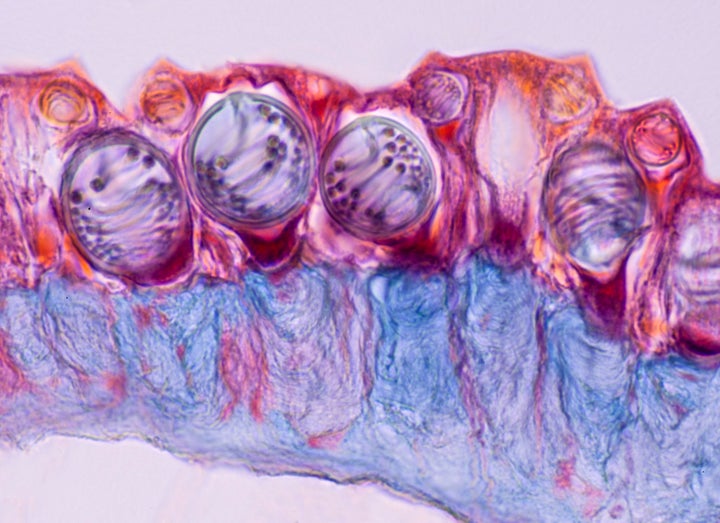🔴 Website 👉 https://u-s-news.com/
Telegram 👉 https://t.me/usnewscom_channel
Your beach vacation has finally arrived. You’re in the ocean, swimming around, floating or even boogie-boarding. And suddenly, you feel a stinging sensation from a jellyfish.
Unfortunately, this is pretty common, with 150 million people worldwide getting stung every year.
The first remedy you might think of is a common one, and it was even featured in the TV series “Friends”: peeing on the sting.
If this comes to mind, you’re in good company: According to a national survey by MedStar Health, 44% of people believe that peeing on a jellyfish sting will help soothe it. In reality, though, doctors say it can cause more problems.
“We’ve all heard the myth about peeing on a jellyfish sting, but it’s not just unhelpful — it can actually make the pain worse,” said Dr. Raj Dasgupta, the chief medical adviser for Sleepopolis, who’s quadruple-board certified in internal, critical care, pulmonary and sleep medicine.
Ahead, he and other doctors explain why peeing on a jellyfish sting is harmful and offer helpful alternatives.
What Happens When You Pee On A Jellyfish Sting
First, let’s start with a quick science lesson from Dr. Kelly Johnson-Arbor, a toxicologist at MedStar Health who’s board-certified in undersea and hyperbaric medicine. She explained that jellyfish tentacles contain barb-like projectiles that are contained within structures called “nematocysts.” When they touch human skin, the nematocysts discharge the barb-like projectiles, which penetrate the skin and release venom.
“The pain from a jellyfish sting is related to both the skin penetration and the toxins present in the venom,” she added. “There are multiple species of jellyfish found throughout the world, and the venom characteristics can vary between species and can even differ within the same species.”
Interestingly, urine can increase the nematocyst discharge, worsening the pain.
“The problem is, urine can set those off, especially if its chemical makeup isn’t right,” Dasgupta said. “So, instead of calming the sting, you might end up releasing even more venom into the skin.” This has been shown in research, too.
Ed Reschke via Getty Images
This problem can get worse if you have an open wound.
“Urine is not sterile and can thus cause an infection as well,” added Dr. Deepak Khanna, an internist and family medicine physician at Penn Medicine. “Urinating on a wound or sting can worsen the pain [and] cause a localized infection, which can lead to a systemic reaction, even.” (Aka, a reaction that affects your entire body.)
Effective Ways To Treat A Jellyfish Sting, According To Doctors
Since peeing isn’t the answer, what is?
After getting stung by a jellyfish, the first step is to get out of the water — even if it doesn’t hurt “that bad.”
“That sounds obvious, but it’s important to stop any more stings and avoid getting hurt further if you’re in pain or disoriented,” Dasgupta said.
It’s true: Severe jellyfish stings can cause confusion and dizziness. They can also cause muscle cramps, Khanna said, which can be especially unsafe when you’re in a body of water. (Enough said.)
Then, it’s time to treat the sting — which is and isn’t a simple process.
“Since jellyfish venom can vary among and within species, there are no uniformly effective treatments for all jellyfish stings,” Johnson-Arbor explained.
With that said, let’s talk about some generally helpful treatments.
Carefully Remove Any Tentacles
This may sound gross, but the good news is that you don’t have to — and in fact, shouldn’t — use your bare hands.
“Use tweezers or even the edge of a credit card to gently scrape them off,” Dasgupta said. “Don’t use your bare hands, or you could end up getting stung [there], too.”
Soothe Pain With Hot Water
Emphasis on the word “hot.”
“What you don’t want to do is rinse with fresh water,” Dasgupta clarified. “It can actually cause the cells to fire more venom.”
Rather, use hot (but not scalding) water, and soak for 20 minutes. “The heat helps break down the venom and can bring a lot of relief,” he explained.
Take Over-The-Counter Medication As Needed
After soaking, Khanna recommended leaving the area alone and taking an NSAID (like aspirin or ibuprofen) if you’re still experiencing pain or inflammation.
If the sting feels itchy, Johnson-Arbor suggested an anti-itch remedy, like hydrocortisone cream, or an antihistamine like diphenhydramine (Benadryl).
Know When Medical Attention Is Necessary
Sometimes, a jellyfish sting is just an annoyance. Other times, it can lead to more serious health problems.
“If you notice trouble breathing, chest pain or swelling beyond the sting area, get medical attention right away,” Dasgupta said. “Some stings can trigger serious allergic reactions.”
Some signs of an allergic reaction, according to Khanna, are fever, chills, nausea or vomiting, rigor (aka chills or shivering) and night sweats.
Thankfully, the earlier steps are pretty effective, though.
“Most [patients] improved rapidly after proper decontamination and pain control,” Khanna said, speaking to his practice. “Always speak to your health care provider and seek care before applying any home remedies that you see online.”
